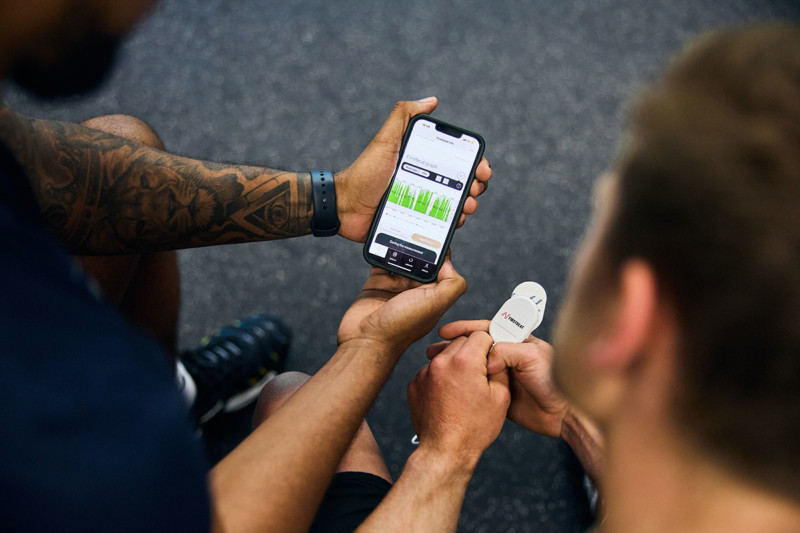
Stress used to be a clear concept with vague implications. We’ve all felt it, and too much of it can harm our health. Still, many wonder what can be done. Stress can come from psychological or phycological factors that affect your body. By measuring heart rate variability, you can manage stress and help ensure recovery.
Managing stress is on everyone’s agenda. As individuals and as organizations, the modern global economy with 24/7 connectivity is pushing us to our limits. It can be difficult, however, to know how we are doing at any given moment. We need objective measurements to successfully manage stress.
Stress and Recovery are Essential to Well-being
Stress is 100% normal, and, in fact, you need it to excel and stay healthy. Stress is how your body prepares for and overcomes challenges.
Facing down those challenges drives us to adapt and grow stronger, improving our health and performance. This is true for all aspects of life, from work to sports, learning new skills or just being better at enjoying leisure time and good company.
Stress only becomes unhealthy if it continues for too long or is very high. Excessive work stress, for example, can negatively impact both physical and mental health.
Normally, your body recovers from stress as a natural process. However, too much (or too frequent) stress reduces your ability to recover. Instead of getting stronger, you get weaker, opening the door to burnout, illness and generally poor well-being.
Your Nervous System Reflects Your Health
Stress and recovery are controlled by your body’s complex nervous system, specifically the Autonomic Nervous System (ANS). The ANS is responsible for key physiological functions, like digestion, as well as the rate of heart contractions and breathing.
Within the ANS, you have the sympathetic and parasympathetic systems. The sympathetic nervous system is responsible for our “fight or flight” response to stress. The parasympathetic nervous system, on the other hand, controls our “rest and digest” state.
When everything is in balance, there is a natural rhythm in the ANS where sympathetic and parasympathetic systems work in tandem. An unexpected life event, illness and other stressors can disrupt that cycle, leaving you unable to recover from stress as normal.
A Reliable Stress Measurement – Heart Rate Variability
Heartbeat is closely regulated by the ANS, determining both heart rate and heart rate variability. Heart rate (HR) is something we have all literally felt. Heart rate variability (HRV) is the variation of time between heartbeats, also known as RR intervals. The difference in those intervals is extremely small. We don’t notice changes in HRV like we do with heart rate.
Though measuring HR is familiar territory, measuring HRV is actually far more indicative of your health and state of mind. The minute variations tell us a great deal about how you and your ANS are doing.
In general, high HRV is considered a sign of a good health, whereas low values indicate something may be wrong. Many factors affect HRV, such as age, genetics, fitness, health, and, importantly, stress
We know HRV increases during rest and decreases when there is some kind of physiological or psychological stress load. In other words, low HRV indicates stress, and stress means your sympathetic system is dominating. High HRV indicates rest, and the parasympathetic system is better engaged.
Why isn’t HRV measurement common? The problem has been that it requires electrocardiography (ECG), something you could only get in a lab or clinic. Fortunately, technology has advanced to the point that we have compact, consumer-grade heart rate sensors capable of measuring HRV.
Your Body Craves Balance
There are many types of stress: chronic stress, a major life event (good or bad), daily hassles, and acute short-term stressors. Any stress, from an exciting movie to exercise, a major presentation to your boss, or going out to dinner, can cause stress.
Giving yourself opportunities to rest and recover is very important in your daily life. Regular physical activity, eating and sleeping well, taking breaks during the workday, socializing, and so forth are all key ingredients to good health and improving performance.
Knowing how you are doing at any given time is not always clear and easy to assess. Your ANS is constantly working, that’s for certain. During stress states, the sympathetic activation is dominant. During recovery, the parasympathetic activation dominates. The associated changes in your HRV, however, are not something you easily notice. We also can become numb to stress. When high stress is the “normal” state, we lose our ability to clearly evaluate our own situation. We end up in a survival mode without realizing it. This can dramatically increase the risk of anxiety, illness, as well as burnout. This is why we need objective measurements to determine how your reaction to a given activity impacts your well-being.
Monitoring Stress Makes Stress Management Possible
Measuring stress is a well-researched area with many established methods. However, scientific research and laboratory testing are hard to implement in the daily challenges we have to manage. We need ECG-quality measurement capabilities to monitor daily stress and recovery. Without objectively knowing how and to what you react on any given day, it is hard to make the needed changes for a healthy lifestyle.
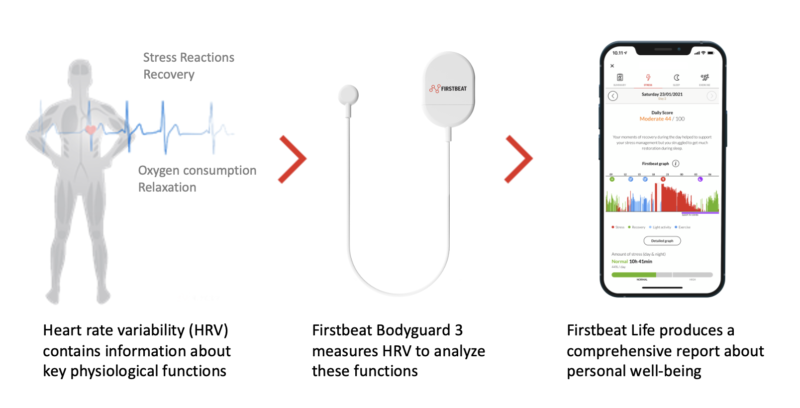
Measuring HRV in everyday life reveals how you are continuously transitioning between fight-or-flight and rest-and-digest states. This is the basis for Firstbeat Life, a complete solution to accurately measure daily stress and recovery. Backed by science and precise heart monitoring, Firstbeat Life creates a digital model of key physiological functions to provide concrete lifestyle insights.
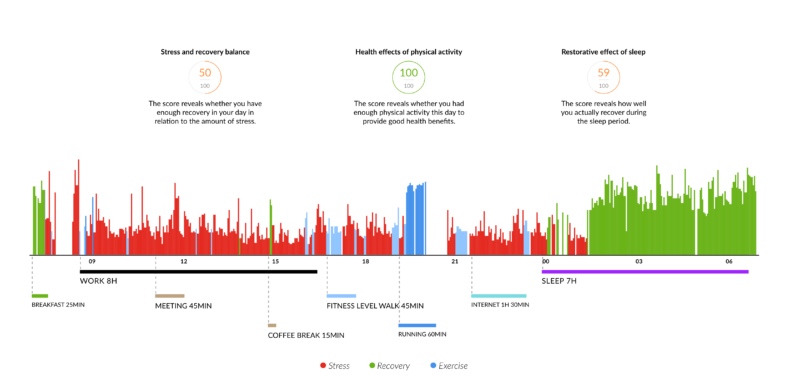
“It is hard for people to change their behaviour without seeing the impact of changes they make,” says Mark Verhaegen, founder of Smartbeat, a Firstbeat partner. “With Firstbeat Life, they get that needed feedback, even on small adjustments in daily activities. Weekends, for example, are typically quite busy times for people. Even though they are not working, weekends are often stressful, and Firstbeat Life shows them that.”
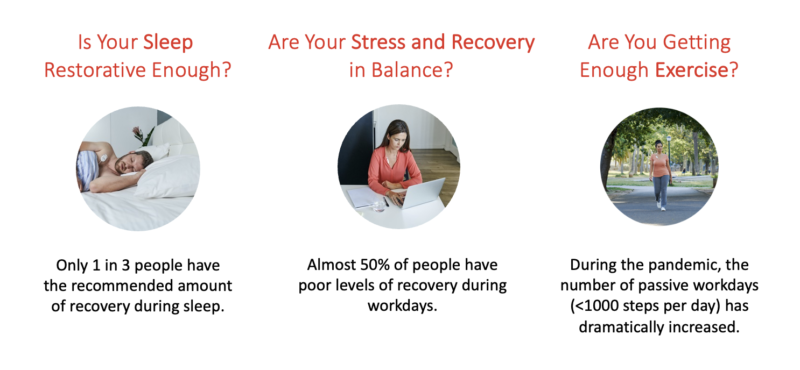
Information is based on Firstbeat database.
From the accurate data, Firstbeat confidently assess your physiological reactions to daily events and provides reliable personalized stress, recovery, sleep and exercise insights. By connecting the dots between your stress measurements and daily life, you can begin your journey towards a healthy lifestyle. Even with small changes, you can make a big impact.
Balancing stress and recovery is on everyone’s agenda. Firstbeat Life is the leading platform for physiology based coaching and it offers you a unique capability to succeed in the growing market for proactive health and well-being services. Integrate Firstbeat Life into your services to help your business grow and thrive. Learn more about Firstbeat Life.
You might also be interested in

How Saga Performance Uses Firstbeat Life to Help High Performance Coaching Clients
Saga Performance specializes in helping corporates and individuals to reach top level performance using a systems based approach. The company’s founder, Satu Ahlman, uses Firstbeat Life as one of the…
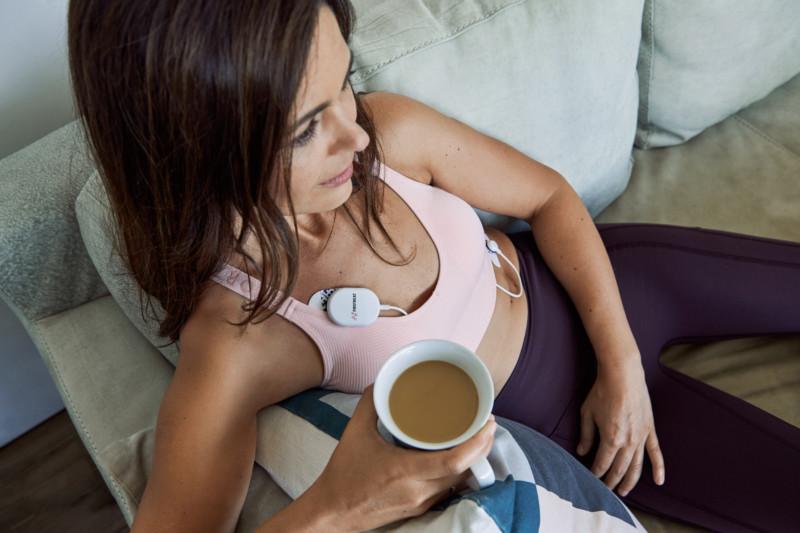
Firstbeat Life and Wearables – What’s the Difference?
From HRV and sleep monitoring to recovery data, here’s how Firstbeat Life differs from wearables.

Why Good-Quality Sleep Should Be at The Heart of All Comprehensive Coaching Programs
Restorative sleep is the basis of good health and performance – it helps the body recover from stress, physical exertion, and fatigue, whereas poor-quality or insufficient sleep predisposes us to…



